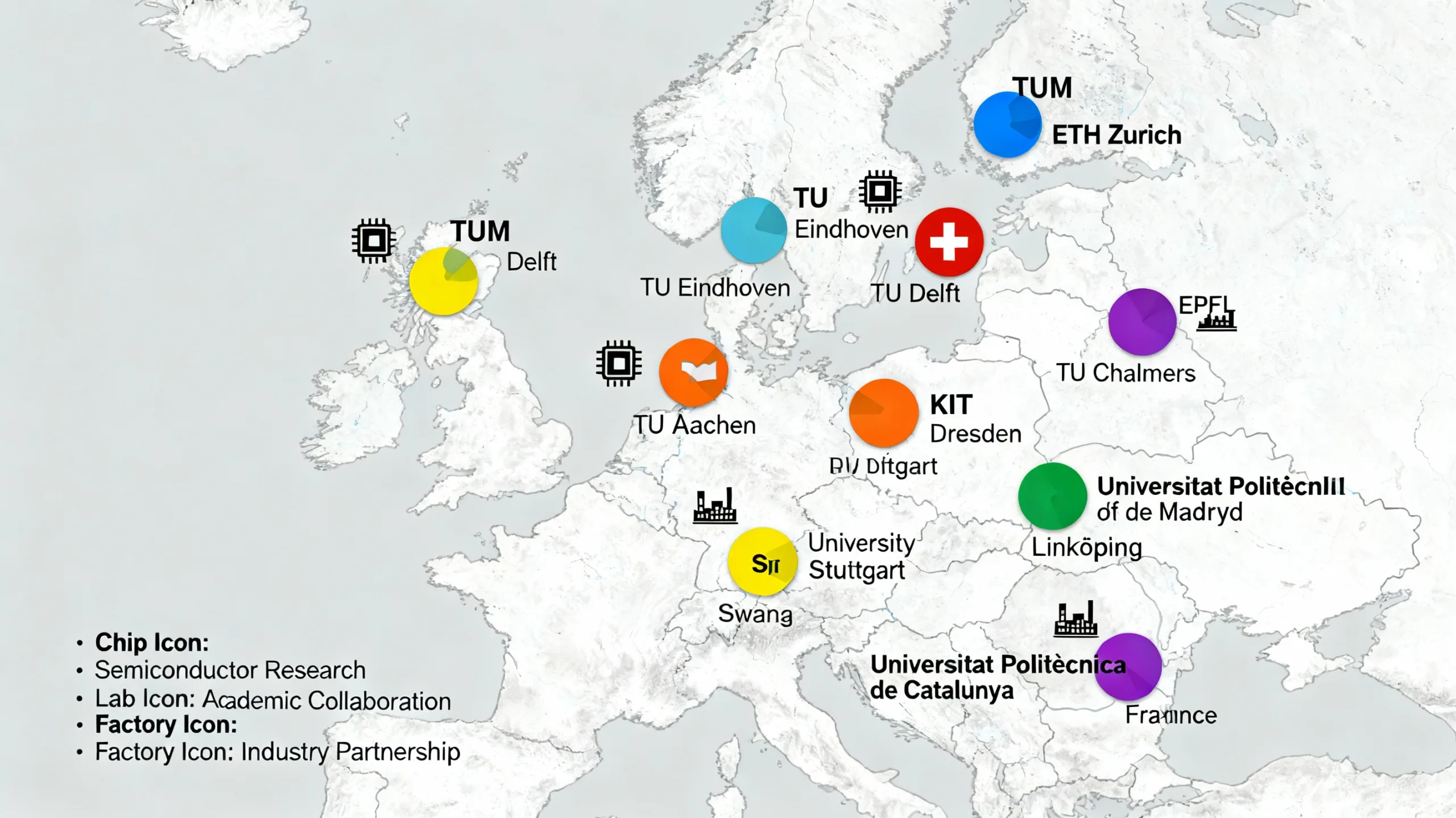Key Insights
- Europe offers world-class chip design master’s programs at top universities like TUM, TU Delft, ETH Zurich, and EPFL, with strong industry and research links.
- Job opportunities in Europe are improving but remain competitive, with Germany and the Netherlands leading the way in semiconductor hubs and placements.
- Recent policy changes and economic shifts are reshaping the balance between Europe and the US for international students and chip design careers.
The semiconductor industry forms the backbone of modern technology, powering everything from smartphones and electric vehicles to AI and quantum computing. As global demand for integrated circuits (ICs) and chip design expertise surges, aspiring engineers are weighing where to pursue advanced education and launch their careers. In 2025, Europe stands out with elite master’s programs in chip design, but faces unique challenges—and opportunities—compared to its US and Asian counterparts.
Europe’s Best Universities for Chip Design and Microelectronics

Europe boasts an impressive array of technical universities offering specialized master’s degrees in chip design, VLSI (very-large-scale integration), and microelectronics:
- Technical University of Munich (TUM): TUM’s Master’s in Microelectronics and Chip Design is renowned for its practical, research-driven curriculum and deep industry ties, especially with companies like Siemens and Infineon. The program emphasizes hands-on chip development, international networking, and flexible study options, preparing graduates for roles across the semiconductor value chain.
- ETH Zurich: Consistently ranked among the world’s top engineering schools, ETH Zurich offers advanced coursework and direct links to Switzerland’s vibrant startup ecosystem.
- TU Delft & TU Eindhoven (Netherlands): The Netherlands is a semiconductor innovation hub. TU Delft’s MSc in Microelectronics and TU Eindhoven’s strong industry collaborations give students access to both academic excellence and the local chip industry.
- RWTH Aachen, TU Dresden, Karlsruhe Institute of Technology (KIT), University of Stuttgart (Germany): These German universities are highly regarded for VLSI, IC design, and embedded systems, often located near major semiconductor clusters like “Silicon Saxony” in Dresden, home to companies such as GlobalFoundries and Bosch.
- EPFL (Switzerland), Chalmers University of Technology (Sweden), Linköping University (Sweden), Universidad Carlos III de Madrid (Spain), Universitat Politècnica de Catalunya (Spain): These institutions offer top-tier master’s programs in microelectronics, semiconductor engineering, and system-on-chip design, often with English-taught curricula and strong research components.
Many of these programs feature close partnerships with leading semiconductor companies, hands-on cleanroom and chip fabrication experience, and options for international mobility or exchange semesters.
Europe vs. US: Job Market, Admissions, and Career Prospects in 2025
The decision to study chip design in Europe or the US depends on several factors:
- Job Opportunities: Historically, the US has hosted more semiconductor jobs and higher average salaries, with companies like Intel, Nvidia, and AMD leading major hubs. However, recent changes to US work visa regulations—such as higher H-1B fees and stricter quotas—have made it more difficult for international graduates to secure employment after their studies.
- European Market Trends: Europe’s semiconductor sector has faced headwinds from economic slowdowns and a concentration in automotive chips, especially in Germany and the Netherlands. Yet, the European Union’s Chips Act and national investments are expanding the region’s chip manufacturing and design capabilities, aiming to double Europe’s global chip market share by 2030.
- Language and Integration: Most top European master’s programs are taught in English, but local language skills can improve job prospects, especially in smaller companies or for permanent roles.
- Quality of Life and Mobility: Europe offers high standards of living, robust social systems, and the possibility to travel easily between countries—an attractive proposition for students seeking international exposure.
A 2025 survey by SEMI Europe showed that Germany, the Netherlands, Switzerland, and Ireland remain the top European destinations for chip design jobs, with the UK offering strong opportunities but slightly more restrictive post-study work policies.
Emerging Trends: Industry Partnerships, Research Innovations, and Global Mobility
The European chip design landscape is evolving rapidly:
- Industry-Academia Collaboration: Programs like TUM’s and TU Dresden’s are embedded within major semiconductor ecosystems, giving students access to internships, research projects, and direct recruitment pipelines. Dresden’s “Silicon Saxony” is Europe’s largest semiconductor cluster, with over 2,500 companies.
- Research and Specialization: Many universities offer pathways in analog/mixed-signal design, power electronics, embedded systems, and even nanotechnology, allowing students to tailor their expertise to fast-growing segments.
- Global Mobility: Initiatives such as Edu4Chip and Erasmus+ enable students to study across multiple countries, broadening both technical and cultural horizons.
- Alternative Destinations: For those seeking more robust job markets, Asia (Taiwan, Korea, Japan, Singapore) is increasingly attractive, hosting major foundries and design houses. Singapore, in particular, is known for its open job market and international tech ecosystem.
For real-world impact, students are encouraged to seek out programs that offer hands-on chip design projects, access to cleanrooms and nanofabrication facilities, and strong industry connections for internships or thesis work. These experiences not only boost employability but are crucial for building a career in a field where technical innovation is constant.
Discover more from WireUnwired Research
Subscribe to get the latest posts sent to your email.




